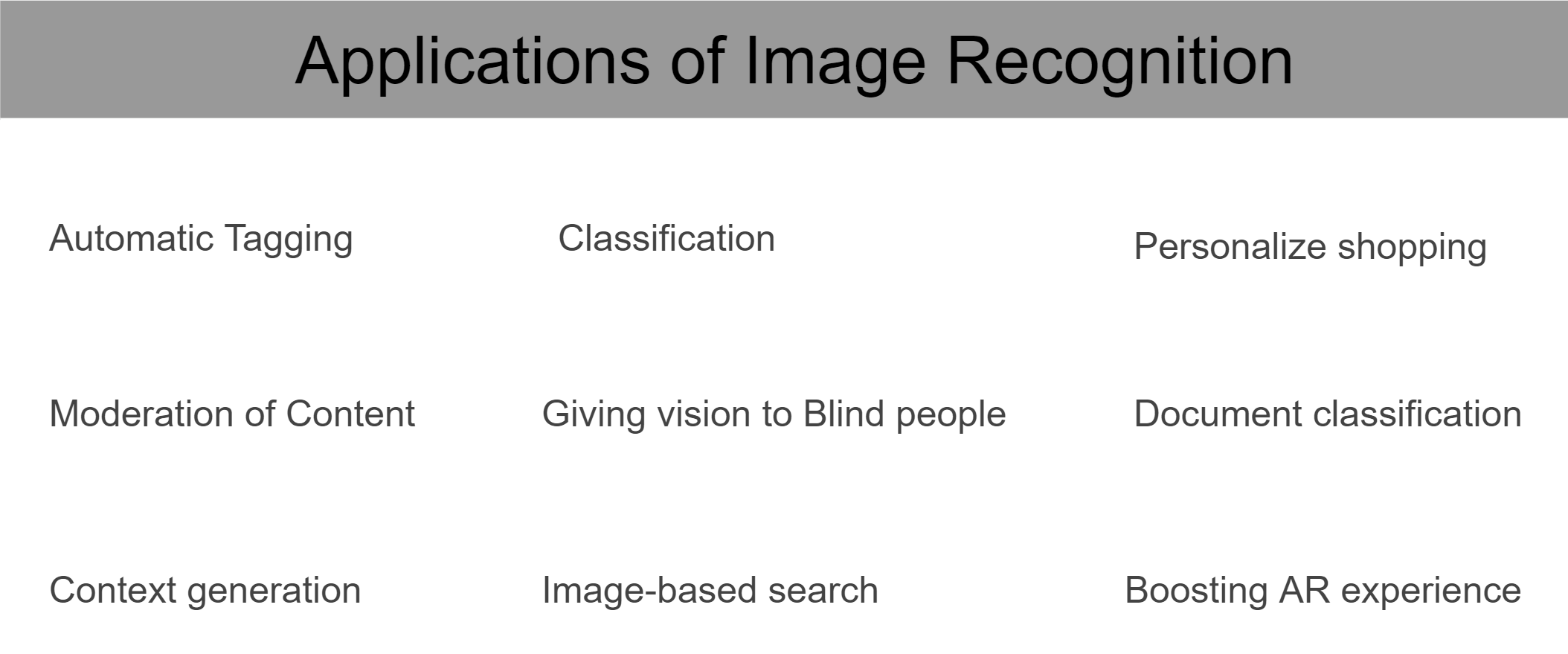Image recognition APIs are a component of a larger computer vision environment. Computer vision can handle everything from face recognition to feature extraction, which distinguishes between things in an image. Amazon and Google have also entered the fray, each with their own amazing set of service offerings. Google Cloud Vision API handles the most popular and common image recognition tasks, such as emotion detection, word understanding, and more.
One of Vision API’s finest features is the Optical Character Recognition Application Programming Interface, OCR API. Fiestack OCR API is also among the top 5 OCR APIs. However, regardless of its popularity, there are some problems with OCR technology. In this article, we will discuss what an image recognition API is, its importance, types of image recognition APIs, its applications, and also its benefits.
What Are Image Recognition APIs?
Dealing with a huge number of images is no longer productive, or even practicable, without some form of image recognition. Certain tasks, such as finding similar photographs or identifying landmarks, are very hard to do without powerful AI techniques.
API is a sort of software interface that offers a service to certain other types of software. As a result, an API is just a software mediator that allows two programs to communicate with one another. APIs deliver a whole product or service that you can access by custom software applications.
The task of classifying photos and objects and assigning them to one of many different classes is image recognition. Image recognition solutions can answer the query, “What does the image depict?” It may, for example, identify printed and handwritten text on a page.
Additionally, you may determine the category of an object using the Image Recognition API based on an image obtained from the device camera or an image from the device gallery. You may also see the accuracy of the object’s identification prediction in % using the model you created.
Why Use Image Recognition?
Image recognition applications can be in a variety of areas, including healthcare, advertising, transportation, and also e-commerce. They recognize and categorize things in images for future use. Image recognition can, for example, differentiate an apple from a banana or categorize the type of flower in the image. It also has various uses other than image classification, including celebrity recognition and enabling quality handwriting recognition.
Image recognition is among the most essential technologies being researched today, since it will help us tackle numerous issues. This includes improving healthcare by accurately identifying diseases, such as cancer, or detecting fraud by analyzing photographs of banknotes.
Understanding your clients and their interests, generating targeted adverts for certain groups, and safeguarding your copyright and brand identification are all part of the process.
Additionally, you can serve Facebook advertising based on people’s specific preferences and interests. Consider the PR disaster you could avoid if you caught someone using your trademark on fake products.
What Are The Types Of Image Recognition?
Image recognition is extensively utilized, from personal security to corporate productivity. It is used in a wide range of applications, including image extraction, monitoring, security, machine maintenance, and autonomous vehicle systems.
Types of image recognition are as follows:
- Recognition of optical characters
- Self-driving cars
- Facial recognition and detection
- Identity verification through iris code
- Real-time object detection
- Emotion recognition
- Sports ball tracking
- Medical imaging
Applications Of Image Recognition
Because deep learning happens to be in image identification, it has become quite effective. This is a machine learning approach that mimics how the human brain works. This is how machines train to detect visual analysis features in images. Machines make sense of photos and generate applicable categories and tags by identifying growing trends and depending on big databases.
Automatic Tagging
The Image Recognition API scans the image and automatically adds appropriate tags depending on what items or persons are in the image. Some software allows you to insert extra tags for elements like colors or moods, making it easier to discover the image you require later on.
Classification
A variety of companies have large databases with graphics that are tough to maintain and use. Because they may lack an appropriate way of making sense of all visual data, it may eventually wind up uncategorized and worthless.
It is extremely difficult to categorize photographs in a visual database that lacks metadata. Machine learning image classification is a crucial answer for this. Companies can quickly categorize and manage images in their databases using image recognition, since it allows for automatic classification of enormous volumes of photos. This allows users to sell their visual material without having to spend numerous hours manually categorizing and classifying it.
Personalized Shopping
Image-based personalization is the idea by which eCommerce advertisers may deliver appropriate product suggestions to their consumers by analyzing product photos to identify the behavior of customers, likes, and preferences.
Every image that depicts an item on an eCommerce website has distinct characteristics based on a variety of elements that allow it to be identified.
These distinct qualities of each image serve as the information you need to track to deliver one of the most accurate product suggestions to your consumers.
Moderation of Content
AI-assisted content moderation can assist human reviewers in their review process and enable businesses to expand more quickly given their resources. The capacity to effectively detect and rapidly delete improper information is critical for community members’ safety and comfort, as well as your site’s general image.
Giving Vision to Blind People
A screen reader is an application that interprets or translates images on the screen and reads them to users. Users can use this program to obtain information gathered from the image recognition tools they are using.
Document Classification
The categorization of documents is a challenge in libraries, information, and computer engineering. It’s about how we organize goods in databases. Because today’s digital storage may hold a large number of objects, manually categorizing them becomes tough. Therefore, for categorization jobs, companies use machine learning (ML) technology.
Context Generation
Image recognition is often used to conduct numerous machine-based visual activities, such as identifying image properties definitions with meta-tags and performing image data searches. For example, IBM uses IBM Watson Visual Recognition, a product on the IBM Cloud that uses custom machine learning models to identify, categorize, and search visual material.
Image-Based Search
Image recognition recognizes and categorizes things in images for future use. It may, for example, be used to differentiate an apple from a banana or to identify the kind of flower in the image.
Boosting AR Experience
The gaming industry has begun to use picture recognition technology in conjunction with augmented reality to give gamers a more realistic experience. Of course, developers profit immensely, since image recognition creates realistic game worlds and characters.
Benefits Of Using Image Recognition
Avoid Trademark Abuse
Trademarks are images that you see across culture. It is a distinguishing symbol for countries, organizations, and other representational signs. With API access, the program goes through information for client logos and raises an alarm if it discovers anything unusual or out of the norm. This system detects clients’ trademarks and logos, increasing detection rates while decreasing manual labor. When it comes to trademark protection, image recognition technology dramatically enhances the process of identifying fake logos and pictures that attempt to scam customers by impersonating a legal brand.
Use Images Your Audience Love
Image recognition allows you to keep track of the engagement on your graphic postings to see how successful they are. Choosing visually appealing branding will convince and also convert customers.
Find Untagged Comments
People may not always tag the brand they are discussing. They post a video or a snapshot of your merchandise. Image recognition systems will find untagged comments, allowing you to safeguard your reputation and maybe identify brand supporters.
Conclusion
Image recognition demonstrates the breadth of possibilities that machine learning may provide to companies operating with enormous libraries of visual material.
Filestack Processing API is a useful tool to have in your toolbox if you’re processing a large number of images. Files may be stored, compressed, and converted using the Filestack Processing API. It can also automatically connect with file-sharing networks, such as Google Drive. Additionally, it can handle many of the other functions indicated by other image processing APIs, such as improper image content description detection and character recognition.
Filestack Processing includes a few more distinguishing aspects worth mentioning. It may be used to tag videos and identify photos with copyright.
Sign up free to explore more on Filestack!
Shanika Wickramasinghe is a software engineer by profession and a graduate in Computer Science. Her specialties are Web and Mobile Development. Shanika considers writing the best medium to learn and share her knowledge. She is passionate about everything she does, loves to travel, and enjoys nature whenever she takes a break from her busy work schedule.
Read More →

